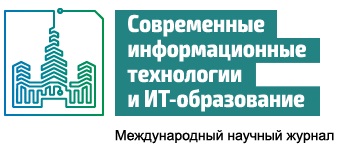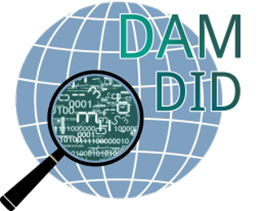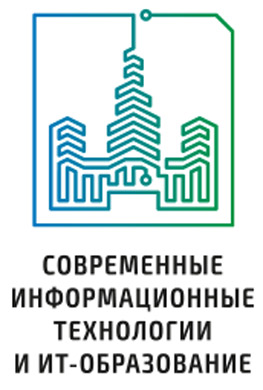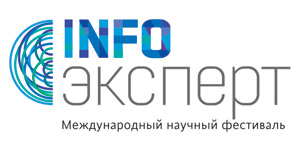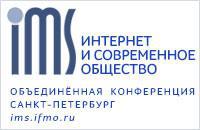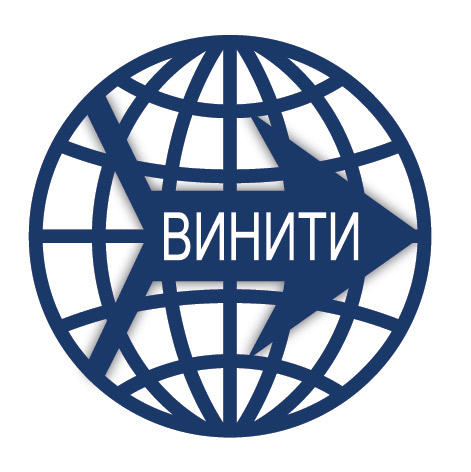Особенности проектирования web-сервиса дидактических материалов
Аннотация
В статье рассматриваются особенности проектирования web-сервиса дидактических материалов, которые предоставляют учащимся школы возможность интерактивного изучения разных предметов и дополнительную информацию к урокам для самостоятельного изучения. При разработке проекта была учтена специфика возраста целевой аудитории. На основании этого факта разрабатывалась архитектура проектируемого приложения. Таким образом были расширены возможности схожих образовательных сервисов, а именно добавлены система рекомендаций предлагаемых материалов, системы индивидуального рейтинга и возможность создания календарного плана учащегося для повышения уровня самодисциплины. В тексте статьи поэтапно строится схема web-сервиса. Первостепенной задачей является выделение соответствующих типов ролей и их функциональных возможностей, что необходимо для выявления схемы взаимодействия пользователей с сервисом. Второй этап содержит описание построенной файловой системы. Данный шаг позволяет грамотно организовать хранение ресурсов сервиса и оптимизировать нагрузку на сервер. Кроме того, рассматриваются возможности масштабирования модели хранения материалов на распределенную сеть для увеличения производительности web-сервиса. На заключающем этапе были определены сферы задач микросервисов: авторизация/регистрация, администрирование курсов, генерация ответа клиенту в формате html-страниц, отображение списка курсов на основе рекомендаций, продвижение по системе достижений и прохождение курсов учащимися. В процессе проектирования были выбраны такие инструменты разработки, как: система управления базами данных, технологии предоставления мультимедийных материалов, framework написания сервиса наиболее подходящих для решения поставленной задачи. Построенный по вышеуказанной схеме web-сервис дидактических материалов может значительно улучшить учебный процесс, делая его более интересным, эффективным и доступным для учащихся школы.
Литература
2. Kozlov S.V. Osobennosti obuchenija shkol'nikov informatike v profil'noj shkole [Features of training pupils in computer science in the profile school]. Koncept = Concept. 2014;(1):31-35. (In Russ., abstract in Eng.) EDN: RTWXKX
3. Makhotin D.A., Nikitin I.M. Updating the content of technological education in the context of the development of digital technologies: the opinion of teachers and heads of general education organizations. Interaktivnoe obrazovanie = Interactive education. 2020;(3-4):71-74. (In Russ., abstract in Eng.) EDN: IXODLX
4. Ildukhina N.V., Gordeev D.Yu., Zamaletdinov A.F., Starygina S.D. Review of modern development means of mobile applications. Modern high technologies. 2019;(4):22-26. (In Russ., abstract in Eng.) EDN: ZHFLPN
5. Tarasova A.V. Digitalization of modern education: problems and prospects. Proektirovanie. Opyt. Rezul'tat. 2024;(2):67-73. (In Russ., abstract in Eng.) EDN: CIMFUK
6. Godin V.V., Terekhova A.E. Contemporary experience of education digitalization. Vestnik universiteta. 2021;(4):37-43. (In Russ., abstract in Eng.) https://doi.org/10.26425/1816-4277-2021-4-37-43
7. Tenyachkina M.O., Bykova K.I., Bogdanova M.V., Kruglyak Y.I. Online services as a means of learning in school. International Research Journal. 2023;(10):21. (In Russ., abstract in Eng.) https://doi.org/10.23670/IRJ.2023.136.10
8. Kuznecov A.A. New type of e-learning environment based on a cross-platform learning model: methodology and testing. Lomonosov Pedagogical Education Journal. 2021;(1):57-75. (In Russ., abstract in Eng.) https://doi.org/10.51314/2073-2635-2021-1-57-75
9. Kosova Ye.A. Web accessibility in e-learning persons with disabilities: Current state of the problem. Pedagogy and Psychology of Education. 2020;(4):35-48. (In Russ., abstract in Eng.) https://doi.org/10.31862/2500-297X-2020-4-35-48
10. Grushevsky S.P., Nazarov A.V., Nazarova O.V. Model for designing interactive didactic content through free and Russian software. Informatics and education. 2023;38(2):47-56. (In Russ., abstract in Eng.) https://doi.org/10.32517/0234-0453-2023-38-2-47-56
11. Cerny T., Donahoo M. J., Trnka M. Contextual understanding of microservice architecture: current and future directions. ACM SIGAPP Applied Computing Review. 2018;17(4):29-45. https://doi.org/10.1145/3183628.3183631
12. Maleshkova M., Pedrinaci C., Domingue J. Investigating Web APIs on the World Wide Web. In: 2010 Eighth IEEE European Conference on Web Services. Ayia Napa, Cyprus: IEEE Press; 2010. p. 107-114. https://doi.org/10.1109/ECOWS.2010.9
13. Neumann A., Laranjeiro N., Bernardino J. An analysis of public REST web service APIs. IEEE Transactions on Services Computing. 2018;14(4):957-970. https://doi.org/10.1109/TSC.2018.2847344
14. Li L., Chou W. Design and Describe REST API without Violating REST: A Petri Net Based Approach. In: 2011 IEEE International Conference on Web Services. Washington, DC, USA: IEEE Press; 2011. p. 508-515. https://doi.org/10.1109/ICWS.2011.54
15. Lakshmiraghavan B. Two-Factor Authentication. In: Pro ASP.NET Web API Security. Berkeley, CA: Apress; 2013. p. 319-343. https://doi.org/10.1007/978-1-4302-5783-7_14
16. Ahmed S., Mahmood Q. An authentication based scheme for applications using JSON web token. In: 2019 22nd International Multitopic Conference (INMIC). Islamabad, Pakistan: IEEE Press; 2019. p. 1-6. https://doi.org/10.1109/INMIC48123.2019.9022766
17. Rahmatulloh A., Gunawan R., Nursuwars F.M.S. Performance comparison of signed algorithms on JSON Web Token. IOP Conference Series: Materials Science and Engineering. 2019;550(1):012023. https://doi.org/10.1088/1757-899X/550/1/012023
18. Jadhav M.A., Sawant B.R., Deshmukh A. Single page application using angularjs. International Journal of Computer Science and Information Technologies. 2015;6(3):2876-2879. https://doi.org/10.1088/1757-899X/403/1/012063
19. Joseph R. J. Single Page Application and Canvas Drawing. International Journal of Web & Semantic Technology (IJWesT). 2015;6(1):29-36. https://doi.org/10.5121/ijwest.2015.6103
20. Fink G., Flatow I. SPA Concepts and Architecture. In: Pro Single Page Application Development. Berkeley, CA: Apress; 2014. p. 49-66. https://doi.org/10.1007/978-1-4302-6674-7_4
21. Müller-Lobeck A., Zhang G. Model-Driven Development of Single Page Applications. In: Stefanidis K., Systä K., Matera M., Heil S., Kondylakis H., Quintarelli E. (eds.) Web Engineering. ICWE 2024. Lecture Notes in Computer Science. Vol. 14629. Cham: Springer; 2024. p. 441-447. https://doi.org/10.1007/978-3-031-62362-2_41
22. Öztürk E., Mesut A. Performance Evaluation of JPEG Standards, WebP and PNG in Terms of Compression Ratio and Time for Lossless Encoding. In: 2021 6th International Conference on Computer Science and Engineering (UBMK). Ankara, Turkey: IEEE Press; 2021. p. 15-20. https://doi.org/10.1109/UBMK52708.2021.9558922
23. Nuñez L., Toasa R.M. Performance evaluation of RTMP, RTSP and HLS protocols for IPTV in mobile networks. In: 2020 15th Iberian Conference on Information Systems and Technologies (CISTI). Seville, Spain: IEEE Press; 2020. p. 1-5. https://doi.org/10.23919/CISTI49556.2020.9140848
24. Shani G., Gunawardana A. Evaluating Recommendation Systems. In: Ricci F., Rokach L., Shapira B., Kantor P. (eds.) Recommender Systems Handbook. Boston, MA: Springer; 2011. p. 257-297. https://doi.org/10.1007/978-0-387-85820-3_8
25. Preobrazhenskiy Yu.P., Konovalov V.M. About methods for creating recommendation systems. Bulletin of the Voronezh Institute of High Technologies. 2019;(4):75-79. (In Russ., abstract in Eng.) EDN: OHEKTK

Это произведение доступно по лицензии Creative Commons «Attribution» («Атрибуция») 4.0 Всемирная.
Редакционная политика журнала основывается на традиционных этических принципах российской научной периодики и строится с учетом этических норм работы редакторов и издателей, закрепленных в Кодексе поведения и руководящих принципах наилучшей практики для редактора журнала (Code of Conduct and Best Practice Guidelines for Journal Editors) и Кодексе поведения для издателя журнала (Code of Conduct for Journal Publishers), разработанных Комитетом по публикационной этике - Committee on Publication Ethics (COPE). В процессе издательской деятельности редколлегия журнала руководствуется международными правилами охраны авторского права, нормами действующего законодательства РФ, международными издательскими стандартами и обязательной ссылке на первоисточник.
Журнал позволяет авторам сохранять авторское право без ограничений. Журнал позволяет авторам сохранить права на публикацию без ограничений.
Издательская политика в области авторского права и архивирования определяются «зеленым цветом» в базе данных SHERPA/RoMEO.
Все статьи распространяются на условиях лицензии Creative Commons «Attribution» («Атрибуция») 4.0 Всемирная, которая позволяет другим использовать, распространять, дополнять эту работу с обязательной ссылкой на оригинальную работу и публикацию в этом журналe.
